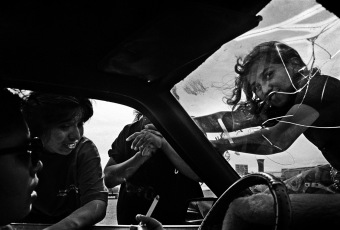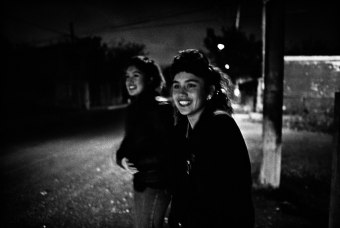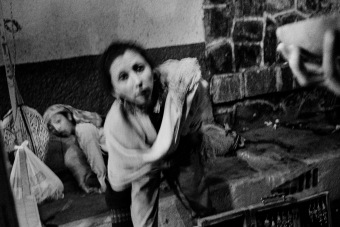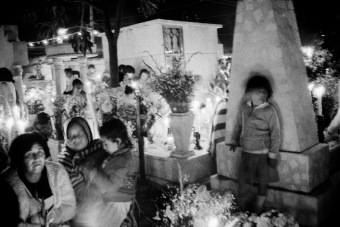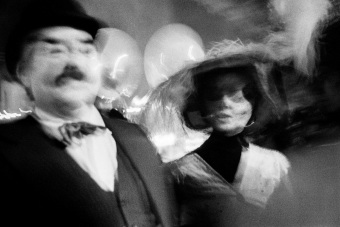Lina Pallotta
Lina Pallotta portrays a group of women workers during a break from work in a maquiladora. Shot in Mexico in the 1990s, the image is part of one of many different reportages devoted by the photographer to the Central American country, captured in moments of folklore and its social contradictions.
Lina Pallotta portrays two young women working the night shift in a manufacturing industry waiting for the bus to take them to work. Shot in Mexico in the 1990s, the reportage is one of many devoted by the photographer to the Central American country, captured in moments of folklore and its social contradictions.
Lina Pallotta portrays a woman in traditional costume begging for a contribution during the Day of the Dead celebrations. Shot in Mexico in the 1990s, the reportage is one of many devoted by the photographer to the Central American country, captured in moments of folklore and its social contradictions.
Lina Pallotta portrays a street artist, a seemingly poor but smiling boy in the night of Mexico City, the fire-eater. Shot in Mexico in the 1990s, this image is part of one of many reportages devoted by the photographer to the Central American country, captured in moments of folklore and its social contradictions.
LINA PALLOTTA is a photographer, an educator and a curator. Through her visual poetics dominated by movement, she develops long-term projects exclusively in black and white, about gender identity, women, and everyday life at the margins. Among her best known works are: Porpora e Valerie (2013), a twenty-year long story about the bond between Porpora, president of the transsexual identity movement, and Valerie, a photo essay that shows the cultural and social changes regarding civil unions in Italy; BASTA – to Work and Die on the Mexican Border (1999), about the life of Mexican women workers in the border factories. She regularly holds workshops and conferences at the International Center of Photography and the Empire State College in New York. *She was born in 1955 in San Salvatore Telesino (BN), and lives between Rome and New York.

